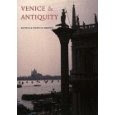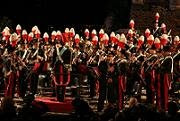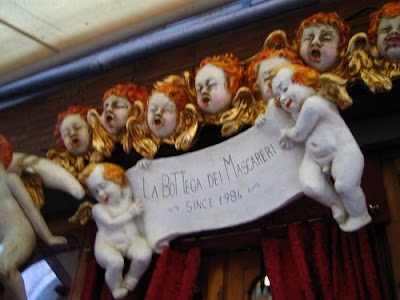 The Circolo Fotografico La Gondola invited me to hear Professor Bruno Rosada speak about "Benedetto Croce and Italian Art of the 20th Century" on Friday night, and a very strange thing happened. I understood the lecture! Usually, I start to fade when people go on and on in Italian. It's hard enough to listen to a lecture, let alone in another language. But, this time, I didn't even have to force myself. It's as if all the words tumbled suddenly into place, and I thought, my god, after all these years, I finally understand Italian! The moment you realize you understand another language, it is something divine.
The Circolo Fotografico La Gondola invited me to hear Professor Bruno Rosada speak about "Benedetto Croce and Italian Art of the 20th Century" on Friday night, and a very strange thing happened. I understood the lecture! Usually, I start to fade when people go on and on in Italian. It's hard enough to listen to a lecture, let alone in another language. But, this time, I didn't even have to force myself. It's as if all the words tumbled suddenly into place, and I thought, my god, after all these years, I finally understand Italian! The moment you realize you understand another language, it is something divine.I've always loved philosophy. I started reading Nietzsche when I was fourteen-years-old, and even though I brag about never going to university, I actually did go to a strange college for a semester after I graduated high school, and majored in philosophy, with a minor in art. (After that, I decided to teach myself because the commute was too difficult; my mother had promised me the use of the family car, but then reneged, so I had to hitchhike to college!)
I won't go into all the details of the lecture, but what really interested me was when Professor Rosada spoke about how he felt at an exhibit of the artist Mario de Luigi, who was the father of a friend of mine, Ludovico de Luigi. Professor Rosada said he finally realized how art broke away from the figurative when he saw Mario de Luigi's work. Now, I am very outspoken about how artists must be able to create human beings. To me, it is essential. I would make a rule that all artists have to put their human beings next to their out-of-space projections, just so I know they can do if they want to. Like writers. These days, everyone has a blog; everyone has a digital camera; everyone is a writer; everyone is a photographer.
But, if I want to, I can write grammatically correct English (and I have put up an example under the blog "Church of San Francesco della Vigna" http://venetiancat.blogspot.com/2008/02/church-of-san-francesco-della-vigna.html.) To me, you must first learn the rules to break the rules (and I break a ton of rules --
 it makes the copy editors crazy), but many people in the arts today are taking other people's broken rules and starting from there, without learning the foundation. So, today we have art built on broken rules that are not understood, only imitated.
it makes the copy editors crazy), but many people in the arts today are taking other people's broken rules and starting from there, without learning the foundation. So, today we have art built on broken rules that are not understood, only imitated.I went with Ludovico and the rest of the family to see his late father's exhibit in Treviso last year, and I was completely blown away about how brilliant Mario de Luigi was. I had the same experience that Professor Rosada described -- ah, ha! So, that's it!
Anyway, on my way to the lecture, I'd noticed a new restaurant, and this was my reaction:
How cool is this?
It's about time someone put a hip restaurant out on Giudecca.
I would make a trip to come out here to eat at this place; it would be fun.
Wait, a second, I think I know the owner.
I think this is Simone's place.
I went inside. I asked, "Is Simone the owner?" They said, "Yes!" They said they would call him, but I said I would stop back later, which I did.
Simone is a very old friend of mine, even though he is very young. We don't see each other often, but when we do, we always have a profound conversation. He had told me about this project a while back, and now, here it was in reality, called "i figli delle stelle" which means, "Children of the Stars." And that, basically, says it all.

Simone has acquired a new sophistication, which comes with the job. We sat in the back room on a sofa and spoke. I talked about all the problems over in my neck of the woods, at Rialto; I told him I was worn down. Simone said, "Cat. In Italy, in Venice, every bad thing has an equal positive result. For every bad thing that happens, there is an equal good thing. The problem is that we only hear about the bad, not about the good. Like the newspapers." He also said, "The definition of what is 'Venetian' is changing. My partner, the chef, is from Puglia, but he feels Venice. You feel Venice. I am Venetian, and I feel Venice. A Venetian now is someone who feels Venice, whether they were born here or not."
During the Republic, there was a rule that to really be Venetian you had to have so many generations born in Venice behind you; I can't remember now exactly how many, but I think it was eight. And, these days, many people who were born in Venice come back here and try to stake their claim, when they don't behave like Venetians at all.
After a wonderful glass of wine and conversation, I got on the vaporetto and went back to San Marco. On the street, someone said ciao to me, and it turned out to be Paolo, the son of Sergio Fragiacomo, at Le Bistrot http://venetiancat.blogspot.com/2008/03/le-bistrot-de-venise.html. Sychronicity!
Immediately after that, a woman stopped me. She said, "Do you remember me?" I said, "Honestly, I'm sorry, but I don't." She said, "We sang 'All You Need is Love' together at Remer." I said, "Oh, of course I remember you!" She is a pianist from Romania. She said, "Now I am playing in Piazza San Marco. Will you come sing it again with me? I sang it just tonight." I said, "Absolutely, when I get back from the mountains." (Just the thought of singing "All You Need is Love" in Piazza San Marco is wondrous.) She had three roses in her hand. She said, "Please take the roses. They gave them to me. I have more at home."
So, I went home with the roses, which I am looking at as I write this. As Simone said, there is good news here in Venice to balance the bad. The most wonderful thing about Venice, to me, is the people who actually live here, and interact with the town.
Ciao from Venice,
Cat









































